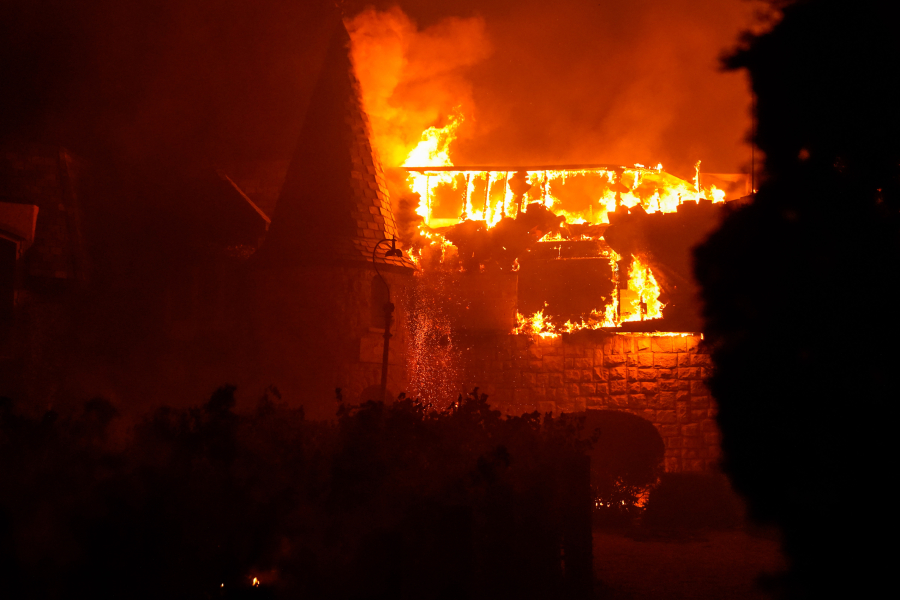SACRAMENTO, Calif. — The worst wildfire season in modern California history resulted in the smallest wine grape crop in years.
California’s wine grape crop fell by 13 percent last year, the U.S. Department of Agriculture reported Wednesday. Experts said smoke damage from wildfires in Sonoma, Napa and Monterey counties were the main reason.
Industry leaders had been bracing for the results ever since last fall’s wildfires cut a destructive path through portions of California’s storied wine country.
The Glass Fire, for instance, destroyed the Chateau Boswell Winery in St. Helena and caused significant damage at nearby Burgess Cellars and Newton Vineyard.
Beyond the damage to brick and mortar, scientists said they feared the crops would suffer from the smoke that blanketed vast areas of Northern California during September, when many of the grapes were still awaiting harvest.
All told, the state’s wine grape crop came in at 3.4 million tons, making it the smallest crop since 2011. The drop from 2019 was the equivalent of more than 80 million gallons of wine down the drain, according to analysis by Novato wine broker Turrentine Brokerage.
“We knew it was going to be light,” said Steve Fredricks, president of Turrentine.
Vineyards are fairly fire-resilient and only a few actually burned. But the thick smoke left tons of grapes unusable.
“Mainly it was the exposure to the smoke in the air that caused the grapes to be destroyed,” Fredricks said. He said smoke can taint the wine’s flavor, although it wouldn’t be hazardous to drinkers’ health.
The loss of grapes was most pronounced on the North Coast, where the crop shrank 31 percent. Next hardest hit was the Central Coast area, at 17 percent.
Despite the shrinkage of the crop, average prices for grapes fell, too — around 17 percent.
The COVID-19 pandemic played a role in that. Sales of the mid-priced wines improved as people started “pantry-stuffing” to ride out the stay-at-home orders, said Glenn Proctor of Ciatti Co. wine brokerage.
But overall prices were brought down by the shutdowns of restaurants and wineries’ tasting rooms, which clobbered the demand for high-end wines, Proctor said. As a result, he said prices suffered more for wines produced on the coast than in the San Joaquin Valley, home to the mid-priced and lower-priced wines.
The wildfires also figured into pricing. Many of the damaged grapes were at the high end of the market, including pricey pinot noir and cabernet sauvignon, Fredricks said.
“A lot of what wasn’t delivered was at higher prices,” he said.



